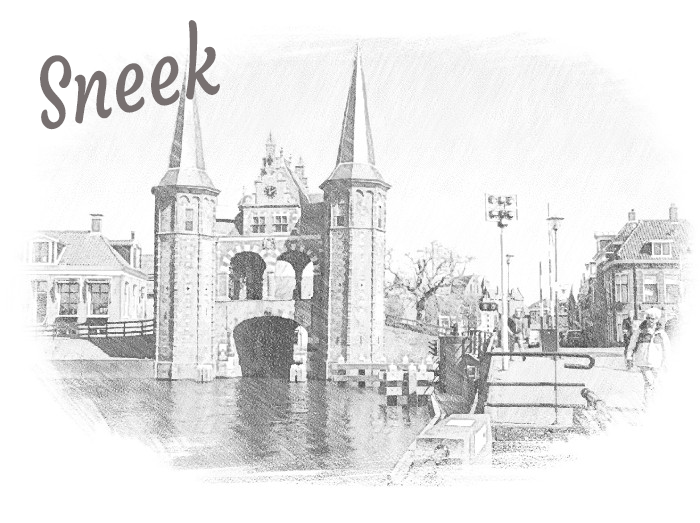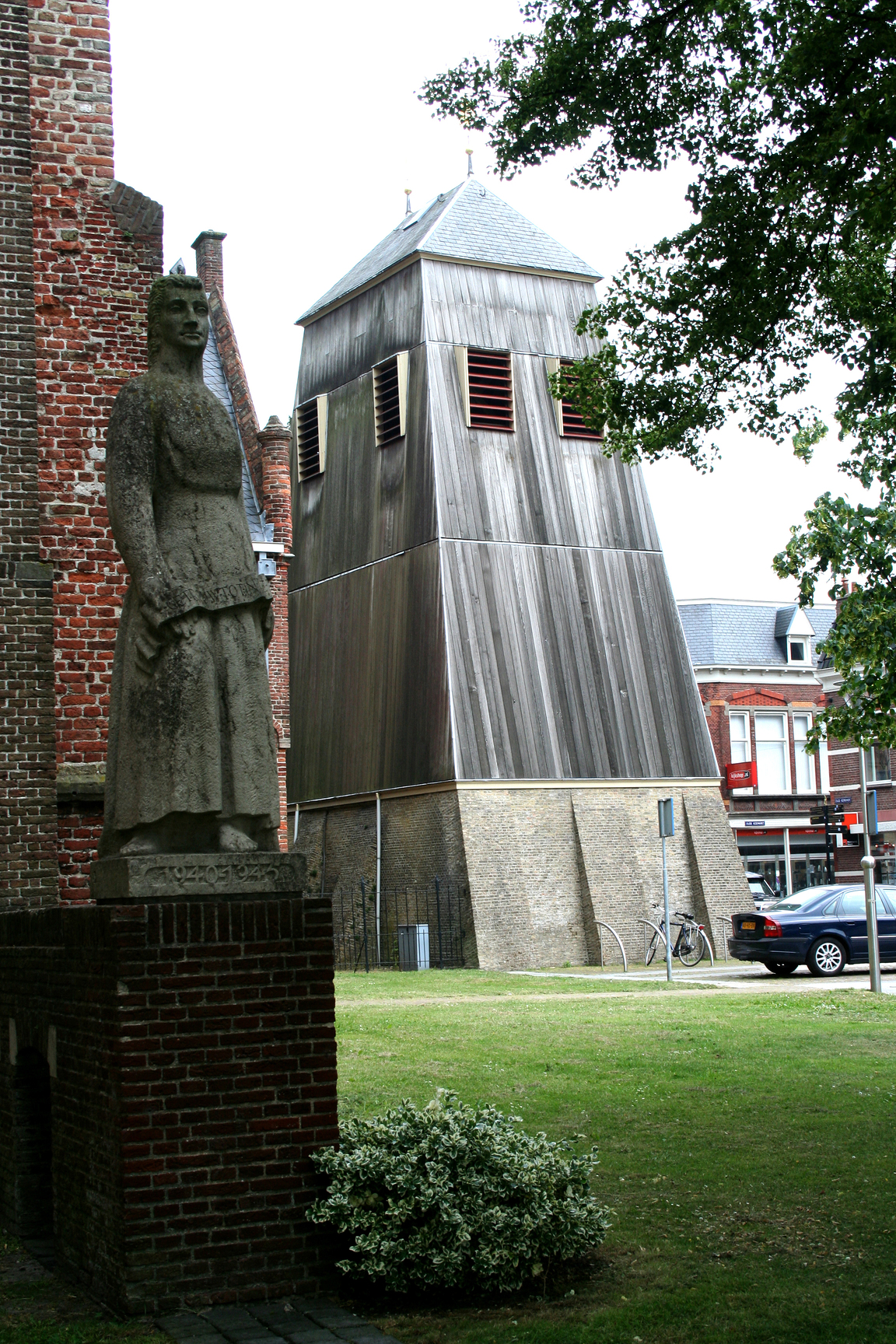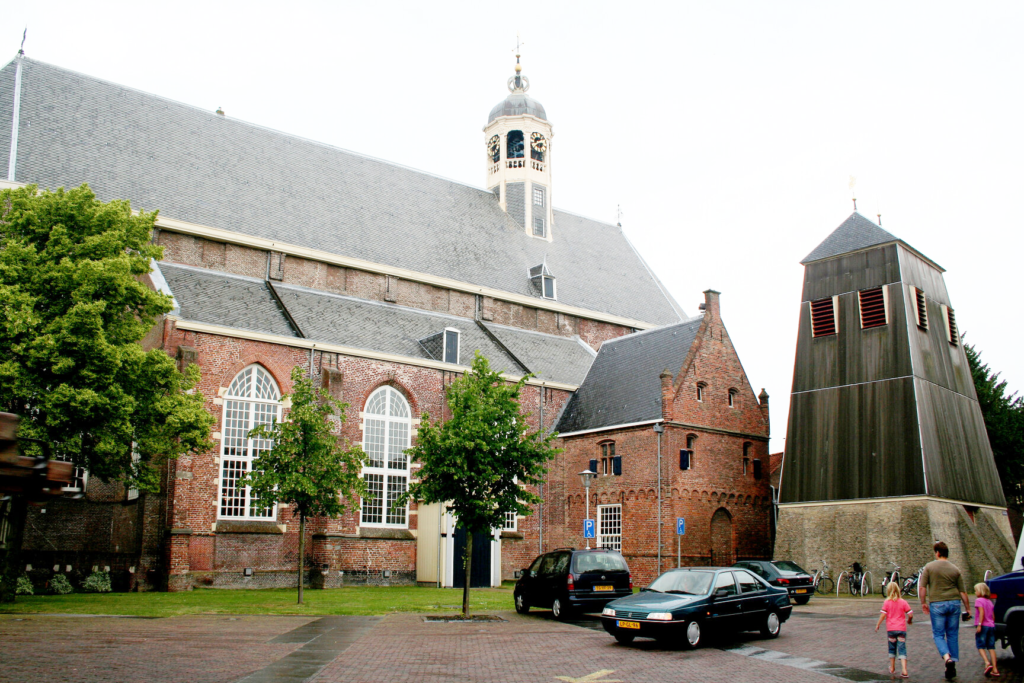
Sneek Waterpoort: A Historical Gem in Friesland
Nestled in the picturesque town of Sneek, in the heart of the Friesland region of the Netherlands, stands a remarkable testament to the country’s rich maritime history – the Sneek Waterpoort. This stunning water gate, dating back to the 15th century, is a symbol of Sneek’s legacy as a vital trade and transportation hub.
The Sneek Waterpoort, also known as the Watergate of Sneek, is a stunning brick and stone structure that spans the Sneekermeer, a picturesque lake in the heart of the town. Its design is a harmonious blend of Gothic and Renaissance architectural styles, making it a captivating sight for visitors and history enthusiasts alike.
Originally constructed as a defensive fortification, the Sneek Waterpoort later evolved into a toll gate, regulating access to the town by water. It served as a critical point for merchants, traders, and travelers passing through Sneek on their way to other parts of Friesland and beyond.
Today, the Sneek Waterpoort stands as an iconic landmark, attracting tourists from around the world. Visitors can stroll along its scenic promenade, taking in panoramic views of the surrounding waterways and historic town center. It also houses a small museum that offers insights into the gate’s history and its role in the development of Sneek.
As a symbol of resilience and adaptability, the Sneek Waterpoort remains a testament to the enduring spirit of the town and its enduring commitment to preserving its rich heritage. It is a must-visit destination for anyone exploring the charming region of Friesland, providing a glimpse into the past while offering a beautiful backdrop for contemporary enjoyment.

Martinikerk
As you begin your walking tour, you’ll immediately notice the well-preserved historic architecture, with charming 17th-century buildings lining the cobblestone streets. Be sure to visit the Waterpoort, a stunning water gate and a symbol of Sneek’s past as a fortified city.
One of the highlights of a Sneek walking tour is the Sneekermeer, a beautiful lake just outside the city center. You can enjoy a leisurely walk along the lake’s shores, taking in the tranquil scenery and perhaps even spotting some traditional sailing boats. The lake is a hub for water sports enthusiasts and a lovely spot for a picnic.
Sneek is also known for its vibrant shopping streets, where you can find unique boutiques and local crafts. Don’t forget to savor some authentic Dutch cuisine at one of the city’s cozy cafes or restaurants.
In conclusion, a walking tour in Sneek is the perfect way to immerse yourself in the city’s rich history, stunning architecture, and welcoming culture. Whether you’re interested in history, nature, or shopping, Sneek has something to offer every traveler. So put on your comfortable shoes, grab a map, and explore the hidden gems of Sneek on foot.
 The Martini Church was originally built in the 11th century and made of tuff stone. Around 1300 the church was enlarged and given three towers in a Romanesque west facade. A wooden clock house was also added.
The Martini Church was originally built in the 11th century and made of tuff stone. Around 1300 the church was enlarged and given three towers in a Romanesque west facade. A wooden clock house was also added.The current church dates from 1498. In that year the choir and nave were renovated in Gothic style. The sacristy on the south side dates from the 16th century and is now used as a vestry room. In 1681 the Romanesque west front collapsed and with it the middle of the three towers; the other two towers were demolished. The badly damaged church was rebuilt, but the towers were not. The places where these towers were located are made visible in the old cemetery by a raised spot. In 1925, the foundations of the pillars were renewed to prevent further subsidence of the church. The church also received electric lighting that year. The church was thoroughly restored in the 1970s and 1980s. During the last restoration, the plaster ceiling was removed from the church and an oak barrel vault was reinstalled in the church. The church is located on a mound in the center of Sneek; it is a three-aisled hall church. The church is currently used for the worship services of the Protestant community in Sneek. The church building can be visited in the summer on weekdays in the afternoon and sometimes also in the evening. In the summer there are organ concerts on Monday evenings, except during Sneek Week.
The interior
As a result of the Reformation, the church became part of the church in 1580


The Coat of Arms of Sneek consists of a coat of arms, held by a wild man and a lion. The coat of arms appears for the first time on a seal from 1422. The lion, on the right, probably represents a journey by the powerful Sneker chieftain Rienck Bockema to the Holy Land. The lion is a reference to the Lion of Judah. The origin of the Lion cannot be substantiated historically with complete certainty. The wild man, left, is a likely reference to the battle that Bockema waged against the pagans in Lithuania and Prussia. This figure is also explained as a reference to the former habitation of the area. On the left half of the coat of arms is a half Frisian eagle, which is more common on shields in the region as a recognition mark. The right half consists of three crowns placed one above the other, this form of display is very rare. This heraldic sign is most likely related to a Charlemagne privilege of Charlemagne to the Region of Friesland, which marked the beginning of Frisian Freedom. This meant that the region was allowed to conduct its own jurisdiction. The original of this freedom privilege was lost in a city fire in 1457, it is now believed.











